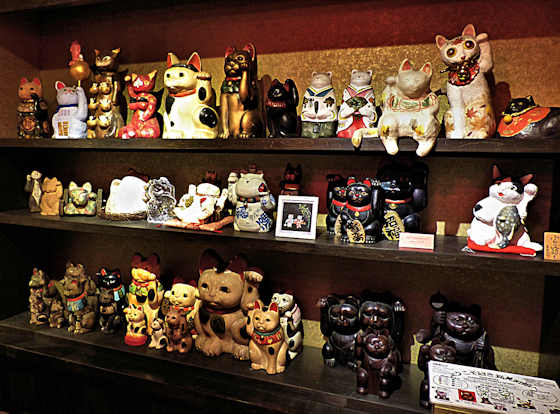Sunday, March 28, 2021
Mount Fuji at Suizenji Garden
Labels:
garden,
kumamoto,
kyushu108,
mount fuji,
teahouse
Thursday, March 25, 2021
Autumn Colors at Suizenji Garden
Wednesday, March 24, 2021
Honmyoji Temple
Monday, March 22, 2021
The Approach to Honmyoji Temple
Saturday, March 20, 2021
Modern Ikebana: some works of Shogo Kariyazaki
A few photos of Yuushien can be found here. and some shots from the Dahlia festival last November
Labels:
ikebana,
peony,
shogo Kariyazaki,
yuushien
Thursday, March 18, 2021
Hosshinmon Oji
Labels:
kumano kodo,
oji,
saigoku,
Shrine,
torii,
world heritage
Tuesday, March 16, 2021
Dounzan Temple 1 on the Shodoshima Pilgrimage
Inside the tall cave is an eight-sided shrine housing a statue of Bishamonten, the honzon of the temple.
Labels:
bishamonten,
cave,
kannon,
shodo88
Sunday, March 14, 2021
Maneki Neko Museum
Labels:
chugoku33,
maneki neko,
Museum,
okayama
Friday, March 12, 2021
Taketomi Island Village
Taketomi 竹富島
Taketomi is a small island a 10 minute ferry ride from Ishigaki Island in Okinawa Prefecture. The small village on the island of about 300 inhabitants is registered as a Group of Historic Buildings a classification I refer to as Preservation District for simplicity. It is one of only two such districts in Okinawa. For other preservation districts I have covered in this blog please click here.
The defining features of the village architecture are the stone walls surrounding each property, the low, single storey homes, and the tile roofs. However, the tile roofs are a very modern addition, the first one on Taketomi not being until 1905.
Labels:
okinawa,
preservation district,
taketomi
Wednesday, March 10, 2021
Kitsuki Samurai House Exteriors
Labels:
Architecture,
kitsuki,
kunisaki fall,
preservation district,
samurai
Subscribe to:
Posts (Atom)
































































